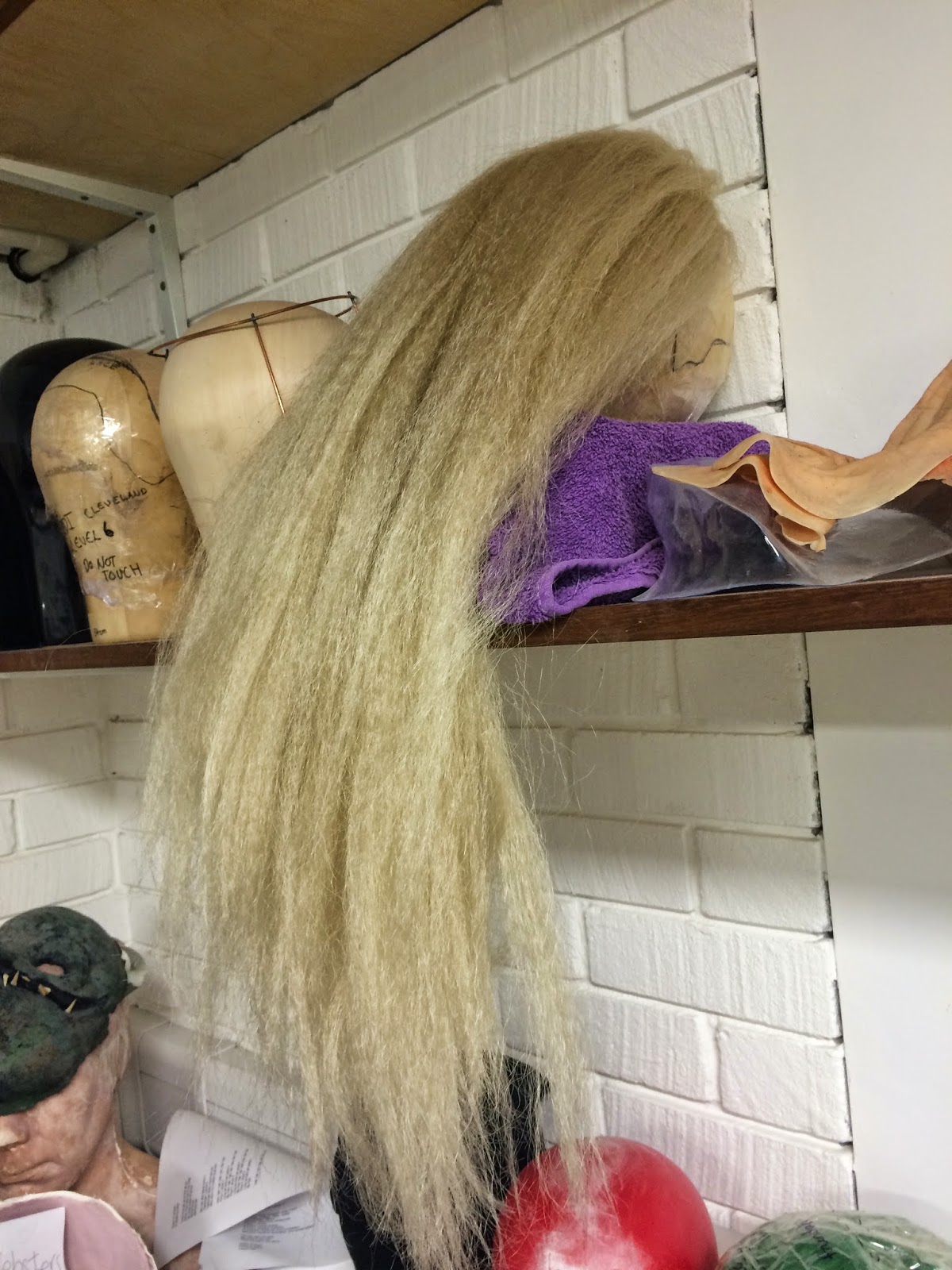 I had chosen to do a wefted wig on the basis that my model had dyed her hair from a natural blonde colour to pink. This was not appropriate for my final naturalistic outcome and therefore needed to be covered. I also wanted to try a new method of creating a wig, other than knotting and wanted to be able to compare the timings of each technique. Wefting is appropriate to my outcome as the hair dosent require being tied up, therefore the wefts will not be seen. I began wefting on tuesday with my synthetic hair and was very pleased with how it progressed. The hair is of much better quality than the synthetic hair i used last year, and is a lot less 'plastic', not as shiny or self knotting as the hair i am used to working with so that in itself was a pleasant surprise!
I had chosen to do a wefted wig on the basis that my model had dyed her hair from a natural blonde colour to pink. This was not appropriate for my final naturalistic outcome and therefore needed to be covered. I also wanted to try a new method of creating a wig, other than knotting and wanted to be able to compare the timings of each technique. Wefting is appropriate to my outcome as the hair dosent require being tied up, therefore the wefts will not be seen. I began wefting on tuesday with my synthetic hair and was very pleased with how it progressed. The hair is of much better quality than the synthetic hair i used last year, and is a lot less 'plastic', not as shiny or self knotting as the hair i am used to working with so that in itself was a pleasant surprise!The wefting technique itself was simple and something I have done in the past so I am familiar with the set up and the process. I managed to create the 6 wefts needed in approximately 10 hours, with a few breaks in-between and they are now ready to be stitched onto my base.
I found the stitching of the wefts onto the base a little harder to master. I first pinned them into place with an even gap of approximately 4-5 cm between wefts. I had pre purchased a blonde toned thread to make the stitching as subtle as possible however it was still slightly darker than the hair.
 It was a time consuming process and did take me 45 minutes per weft to stitch on, however I would prefer to spend more time on something with a neater outcome.
It was a time consuming process and did take me 45 minutes per weft to stitch on, however I would prefer to spend more time on something with a neater outcome.Overall I am happy with the result, they are securely bound to the lace which is crucial when brushing will occur - and also washing of predominately human hair wigs.
My main concern is that the hair may be too thick still, although using synthetic hair it is very difficult to create a realistic 'naturally thick' wig as the hair is so much more coarse than human hair, in particular european human hair.




No comments:
Post a Comment